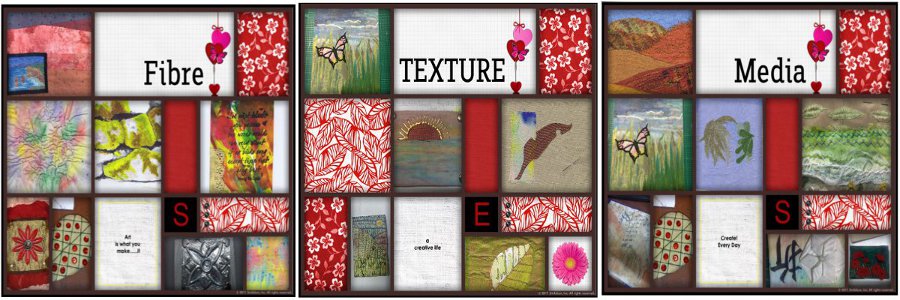Stem stitch
When you are doing stem stitch by hand, the stitches look like the picture below.
To accomplish this in free motion, we use zig zag.
Satin stitch is a closed zig zag stitch. This means that it has a short stitch length. In free motion, this is controlled by how fast or slowly you move the fabric under the needle. If your movement is not even, the satin stitch will be uneven too, but you can go back over it as I have done in the video to even it up.
Above, you see a normal satin stitch. In order to create a stem stitch, with overlapping stitches like in the hand stitch we rotate the hoop 45 to 90 degrees or one eighth to one quarter of a turn. A quarter turn is easier to accomplish.
When we rotate the hoop, we do not change the direction we are moving in. In the top example, I am moving the hoop to the left and I am facing the machine at the left. This is much easier to see in the video.
So, really stem stitch is quite and easy stitch, however, it does require a little practice to master curves using it.
Stem stitch is used for, obviously stems, but also for any definite lines in a piece of work.
Leaves
I use this technique usually for grasses and long leaves. I use another technique for small leaves.Basically, we start with a satin stitch and end up with a stem stitch as in the diagram below.
As my machine has neither of these things and to boot I am left handed and the dials are on the right, i have developed this method.
If we look at the leaf from the right, I have started with satin stitch, then as we go left, the stitches angle so that at the tip they become stem stitch. This is much clearer in the video.
You might find it easier to stabilise the fabric near the leaf and allow the rotation by using a bamboo skewer (cut short to make it easier to manage.) I use use my finger, but I DO NOT RECCOMMEND THIS TO ANYONE.
This stitch takes lots of practice as you can see below.
But remember, little irregularities can usually be remedied by more stitching (to a point). None of us is perfect.
Video
This short video shows both stitches being made on the machine.Hope you are enjoying this series.
I have designed a sampler (it is actually a little landscape) to go with the stitch course and will have the pattern ready for the next lesson. I will also go back over the previous lessons so we can do some homework with it and get our stitches in the right places.
It has been an extremely long day and I am finally off to bed. Happy Stitching
“The thing that is really hard, and really amazing, is giving up on being perfect and beginning the work of becoming yourself.”
Anna Quindlen






